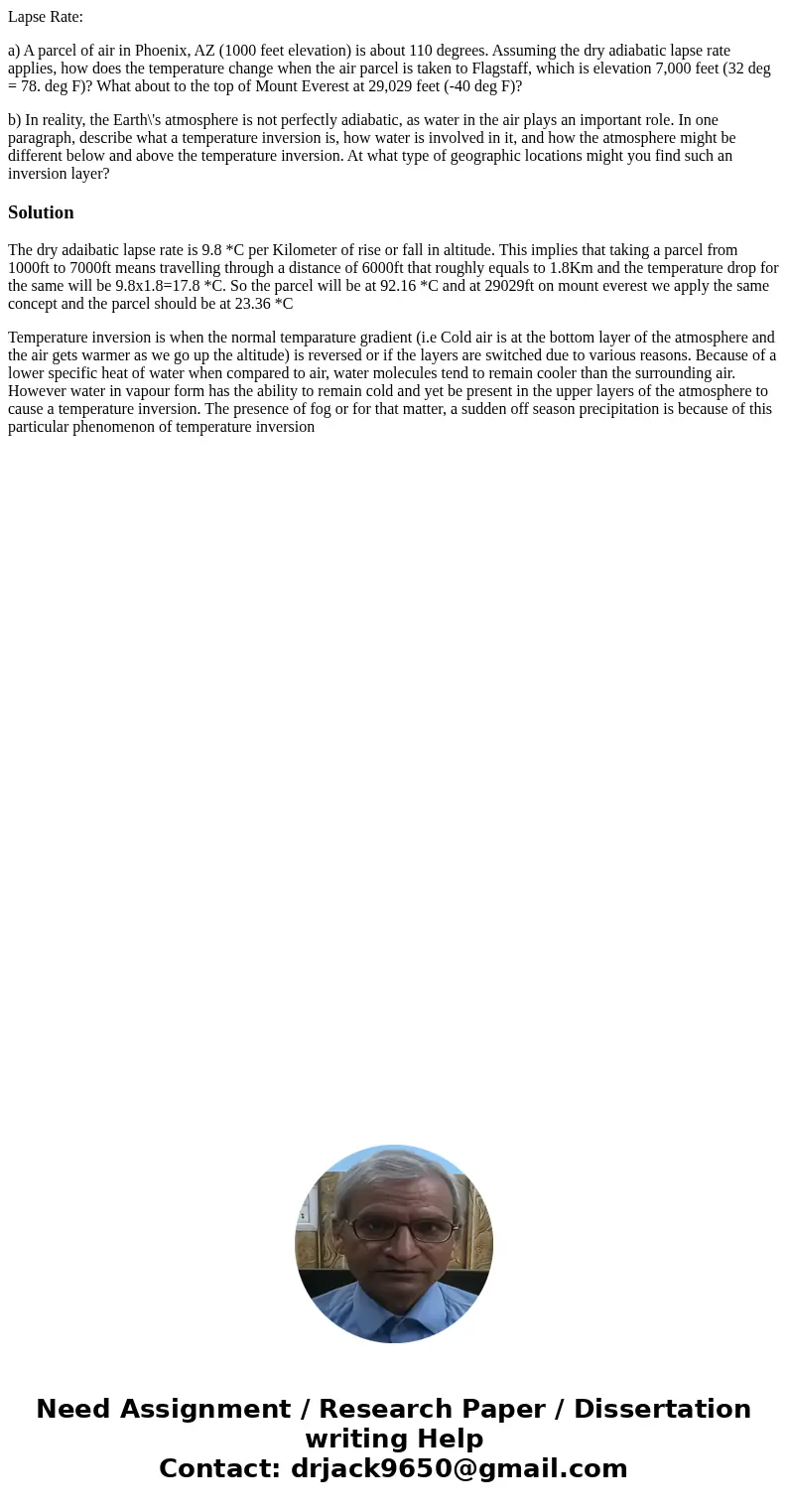Lapse Rate a A parcel of air in Phoenix AZ 1000 feet elevati
Lapse Rate:
a) A parcel of air in Phoenix, AZ (1000 feet elevation) is about 110 degrees. Assuming the dry adiabatic lapse rate applies, how does the temperature change when the air parcel is taken to Flagstaff, which is elevation 7,000 feet (32 deg = 78. deg F)? What about to the top of Mount Everest at 29,029 feet (-40 deg F)?
b) In reality, the Earth\'s atmosphere is not perfectly adiabatic, as water in the air plays an important role. In one paragraph, describe what a temperature inversion is, how water is involved in it, and how the atmosphere might be different below and above the temperature inversion. At what type of geographic locations might you find such an inversion layer?
Solution
The dry adaibatic lapse rate is 9.8 *C per Kilometer of rise or fall in altitude. This implies that taking a parcel from 1000ft to 7000ft means travelling through a distance of 6000ft that roughly equals to 1.8Km and the temperature drop for the same will be 9.8x1.8=17.8 *C. So the parcel will be at 92.16 *C and at 29029ft on mount everest we apply the same concept and the parcel should be at 23.36 *C
Temperature inversion is when the normal temparature gradient (i.e Cold air is at the bottom layer of the atmosphere and the air gets warmer as we go up the altitude) is reversed or if the layers are switched due to various reasons. Because of a lower specific heat of water when compared to air, water molecules tend to remain cooler than the surrounding air. However water in vapour form has the ability to remain cold and yet be present in the upper layers of the atmosphere to cause a temperature inversion. The presence of fog or for that matter, a sudden off season precipitation is because of this particular phenomenon of temperature inversion

 Homework Sourse
Homework Sourse